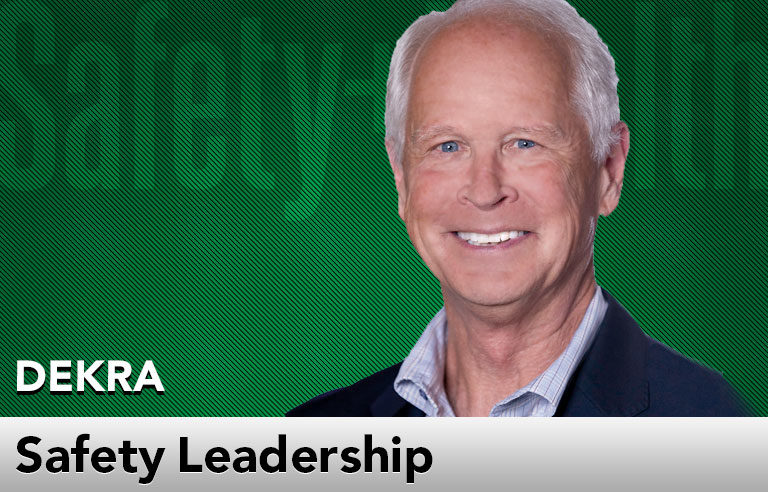Safety Leadership: Dirty little secrets: Safety insights from the transportation industry

Editor’s Note: Achieving and sustaining an injury-free workplace demands strong leadership. In this monthly column, experts from global consulting firm DEKRA share their point of view on what leaders need to know to guide their organizations to safety excellence.
The U.S. transportation industry has an exceptional safety record – when viewed through the lens of the passenger. In 2021, scheduled passenger airlines recorded no serious passenger injuries or fatalities. However, airlines and, to a lesser extent, their transportation cohorts continue to experience serious injuries and fatalities among their employees – something their paying passengers or regulators would never tolerate.
Passenger transportation modalities and safety technology have advanced tremendously over the past century. Over the past 10 years, the passenger vehicle death rate per 100 million passenger miles was more than 20 times higher than buses, 17 times higher than passenger trains and 595 times higher than scheduled airlines, data from the National Safety Council and various government agencies shows. The 2021 lifetime odds of dying as an aircraft passenger in the United States were too small to calculate.
In contrast, employees of scheduled airlines continue to experience a recordable injury rate that is more than two times that of general industry. Flight attendants experience injuries and illnesses involving days away from work at a rate more than five times that of general industry, data from the Bureau of Labor Statistics shows. Airline employees who work “below the wing” continue to experience life-altering injuries and fatalities that stand out dramatically when compared with passenger safety or employee safety in other industries, according to the Federal Aviation Administration.
Only recently have some flight safety programs been adopted to improve ground safety for airline employees. For example, line operations safety audits, which originated with flight operations to proactively improve safety and enhance performance through peer observations, are now being promoted for maintenance and ramp operations to identify and manage threats and errors before they lead to incidents. What’s next? How can airlines, their transportation partners or any organization move the needle to become world-class organizations for employee safety? Places to double down can include:
Deep engagement in daily safety activities to protect the team. Having an organizational value for safety is one thing, but having it demonstrated each day by every person in every role is another. This is where the rubber meets the road, as we ask the team to display safe work skills and feel the connection to the team as safe professionals do.
Weak signals detection. Using effective performance tools as part of the organization’s work processes reduces susceptibility to procedural drift, as critical errors that affect safety and overall operations quality are identified. High-performing organizations are always seeking ways to refine existing systems and enable teams to correct actions and remove the barriers to solid execution of safe work. These include leadership development to meet the expectations of today’s workforce, skills to address team dynamic issues, advanced hazard identification techniques that tap into human and organizational performance, and introducing multiple levels of protection. For an injury to occur, there are almost always multiple weak signals.
Socialize SIF. Team members should be able to demonstrate how tasks with potential SIF exposure are emphasized and addressed, compared with tasks that can lead to lesser injuries. They can feel the difference in the moment, as their exposure to harm changes (like a gauge on a car indicating changes), and they take action to make the tasks safe.
Leading an organization to true world-class safety is a difficult journey that’s never quite finished. There’s always one more rung on the ladder of progress to climb. World-class safety comes from the heart, uses current science and engages the whole organization.
This article represents the views of the author and should not be considered a National Safety Council endorsement.
 Capt. Neil Schnaak is a vice president in DEKRA’s (dekra.us) consulting practice. He has extensive experience coaching management teams and leaders to achieve organizational and safety-specific objectives. With more than 30 years of experience in the aviation industry, Schnaak is highly knowledgeable in aviation safety; flight operations management; flight training; ground operations; customer service; and operational reviews/audits of air-carrier policies, procedures and methods.
Capt. Neil Schnaak is a vice president in DEKRA’s (dekra.us) consulting practice. He has extensive experience coaching management teams and leaders to achieve organizational and safety-specific objectives. With more than 30 years of experience in the aviation industry, Schnaak is highly knowledgeable in aviation safety; flight operations management; flight training; ground operations; customer service; and operational reviews/audits of air-carrier policies, procedures and methods.
Direct to your inbox: Sign up to be notified in email about new "Safety Leadership" columns.
Post a comment to this article
Safety+Health welcomes comments that promote respectful dialogue. Please stay on topic. Comments that contain personal attacks, profanity or abusive language – or those aggressively promoting products or services – will be removed. We reserve the right to determine which comments violate our comment policy. (Anonymous comments are welcome; merely skip the “name” field in the comment box. An email address is required but will not be included with your comment.)

